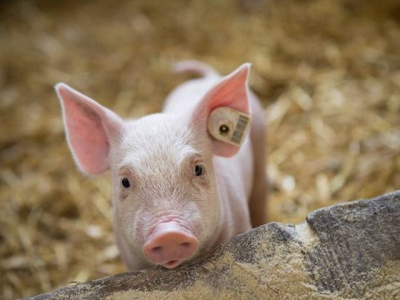Longitudinal investigation of swine gut microbiome published

Distinct stage-associated swine gut microbiome may be determined by differences in diet and/or gut physiology at different growth stages.
A team of researchers from the University of Arkansas department of animal science recently published an article on their findings from a longitudinal study of the swine gut microbiome.
The article, "Longitudinal Investigation of the Swine Gut Microbiome from Birth to Market Reveals Stage & Growth Performance Associated Bacteria," was first published online in late July and features contributions from a number of researchers, including: Xiaofan Wang, Tsungcheng Tsai, Feilong Deng, Xiaoyuan Wei, Jianmin Chai, Joshua Knapp, Jason Apple, Charles V. Maxwell, Jung Ae Lee, Ying Li and Jiangchao Zhao.
"We are excited to publish our research in the Microbiome journal," said Zhao, associate professor of animal science. "This is an excellent team effort."
According to the University of Arkansas, the article details research that sought to fill in the existing knowledge gap showing that — despite recent advances in the understanding of the swine gut microbiome at different growth stages — a comprehensive longitudinal study of the lifetime (birth to market) dynamics of the swine gut microbiome is still lacking.
"Following the human microbiome research area, lots of progress has been made in the swine gut microbiome in recent years," Zhao said. "However, most of these studies are either cross-sectional or sporadic, with few sampling points. Many important biological and ecological questions are still unknown in this field."
The study itself involved the repeated collection of a total of 273 rectal swabs from 18 pigs during the lactation, nursey, growing and finishing stages. DNA was then extracted from these samples and subjected to sequencing before being analyzed using a process called the Deblur algorithm, the announcement said.
The final results produced observable, distinct shifts in microbiome structure along different growth stages. It was also discovered that diet — especially crude fiber from corn — was a major factor in shaping the swine gut microbiome, the announcement said.
"The longitudinal design, with many sample collections from the same set of pigs across different growth stages, allowed us to understand how the swine gut microbiome changes over time and to identify the passengers and residents of the swine gut," Zhao said.
Utilizing the results from this study, the group concluded that the distinct stage-associated swine gut microbiome may be determined by the differences in diet and/or gut physiology at different growth stages. The results also emphasize the importance of optimizing stage-specific probiotics aimed at improving animal health and productivity.
The university said this comprehensive longitudinal study remarkably expanded the understanding of the swine gut microbiome and addressed several key ecological questions, such as: How does the swine gut microbiome change from birth to market across all the different growth stages? What are the key drivers shaping the swine gut microbiome during these stages?
"A well-designed and controlled longitudinal study with a parallel validation trial is critical to reveal the underlying mechanisms of the swine gut microbiome development," Zhao said. "This study not only filled our knowledge gaps but also allowed us to identify several growth performances associated bacterial strains. Dr. Xiaofan Wang, the lead author of this paper, has isolated these strains by a culturomics approach. When we fed pigs with these beneficial bacteria, they significantly increased the growth performance of pigs. This is a great example of how to translate basic research to animal production."
Related news
 Novel swine virus type may shed light on viral evolution
Novel swine virus type may shed light on viral evolution New type of enterovirus may partner up with "helper virus" to gain access to host cell, but mechanism underlying this process is unclear.
 Changing piglet feeding schemes and management approach is key to AGP and ZnO removal
Changing piglet feeding schemes and management approach is key to AGP and ZnO removal Changing piglet feeding schemes and management approach is key to AGP and ZnO removal, says nutritionist
 Tracking ASF survival in feed could help with mitigation efforts
Tracking ASF survival in feed could help with mitigation efforts Expanding the understanding of how long African Swine Fever survives in complete feed and feed ingredients and tracking the virus’ half-life may improve